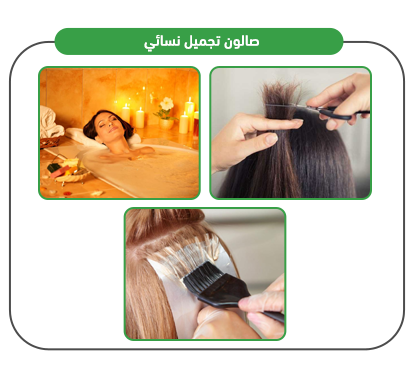Feasibility study for a beauty salon project, which is the establishment of a women’s beauty salon, to provide services dedicated to women, such as hair styling and cutting, makeup application, skin cleansing, massage, etc.) where the salon provides beauty services for women, such as makeup, manicure, pedicure, “hair cutting, dyeing, straightening, blow drying” and others.

Feasibility study of a beauty salon project, which is the establishment of a women’s beauty salon, to provide specialized services for women such as hairstyles and haircuts, make-up, skin cleansing, massage ….. etc.) Where the salon provides beauty services for women from makeup, manicure and pedicure from “haircuts, dyeing, straightening, and consultation” and others. The project is also not limited to providing cosmetic services with makeup only, but extends to include Moroccan hammam and programs to treat wrinkles and signs of aging and provide advice to maintain the purity and freshness of the skin, and this is what distinguishes the project from other women’s workshops. The project targets all women and all ages, as these things are not limited to brides only, but have become common for all women for parties, formal and informal outings, and at all times. The project also targets women from 15 to 55 years old, as women care about their beauty and appearance, which they always love to look in the most beautiful form, and of course this will not happen unless they go to one of the beauty salons that provide many services and provide them with everything they need to look beautiful. Therefore, the project is considered one of the great investment opportunities that achieve high economic returns compared to other projects.



Availability of a distinguished professional staff
Services provided in a sophisticated and advanced manner.
Diverse services offered by the women’s salon.
A sufficient number of workers are available.
Some salon-specific services are available.
The women’s salon’s location is distinguished.
Executive summary
Study project services/products
Market Size Analysis
Risk Assessment
Technical study
Financial study
Organizational and administrative study

Service sector in GCC countries
According to the macroeconomic theory of sectors, the economy is divided into three main and large sectors: the first; – is the sector that is based on collecting raw materials and includes mining companies, timber companies, oil exploration companies, in addition to agricultural and fishing industries. The second sector; is the sector that depends on goods and their sale, such as: (car manufacturing, furniture, clothing trade… etc.). As for the third sector, known as the “services” sector; it is the sector responsible for providing and producing services, essentially relying on intangible things, such as: entertainment, health care, transportation, hospitality, restaurants, etc. This theory believes that the more advanced countries are, the more their economies are based on the third sector, unlike primitive countries, which rely mostly on the first sector (the United States of America, for example, the service sector constitutes 85% of its economy).
Kingdom of Saudi Arabia:
The State of Qatar:
Kuwait:
United Arab Emirates:
Sultanate of Oman:
Global Service Sector
The service sector is the major contributor to the world’s gross product; It alone accounts for more than three fifths of this output. The sector does not rely on the production of tangible goods such as automobile and furniture, but rather on the provision of intangible services such as banking, medical care, transportation, hospitality, leisure, etc. The value of the sector market was estimated in 2020 at USD 10,814.49 billion and rose to USD 11,780.11 billion in 2021. The market achieved a CAGR of 8.9%. After recovering from the effects of the coronavirus pandemic, global market experts expect the sector’s market to reach US $ 15683.84 billion by 2025, bringing the market to a CAGR of 7% in the coming years.
